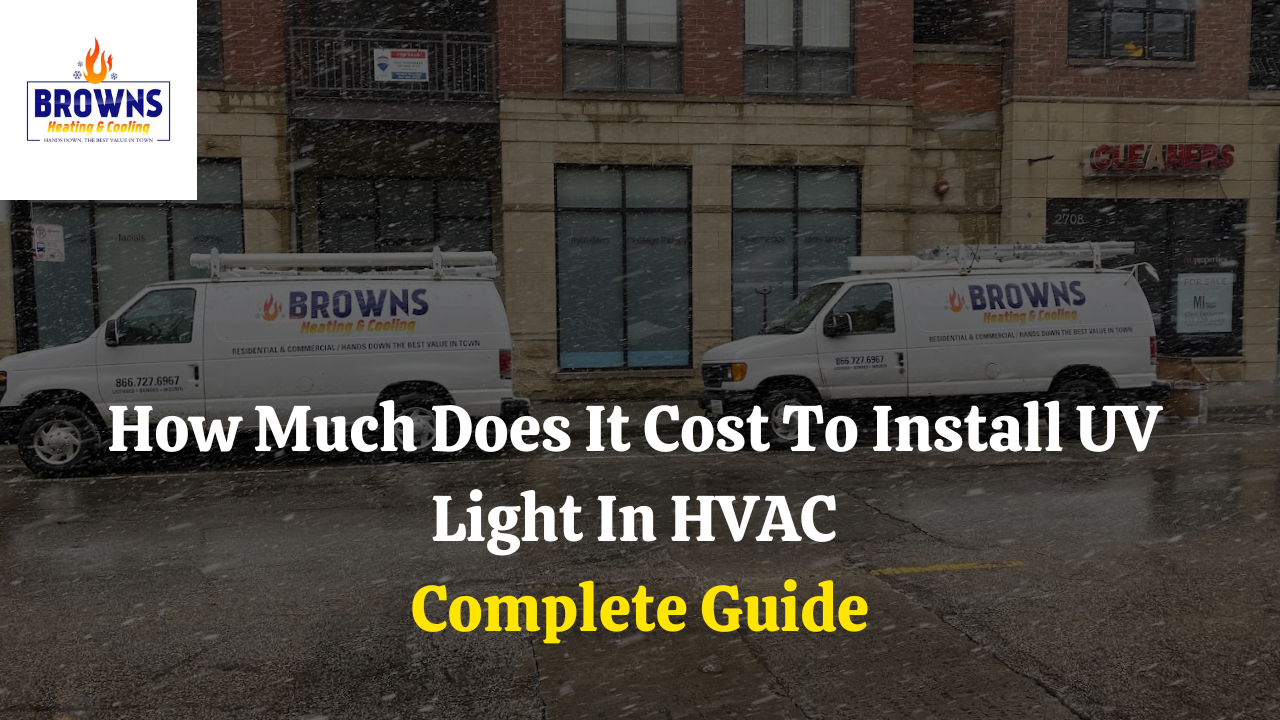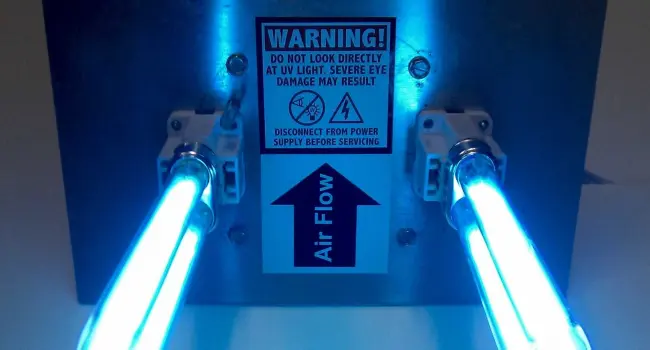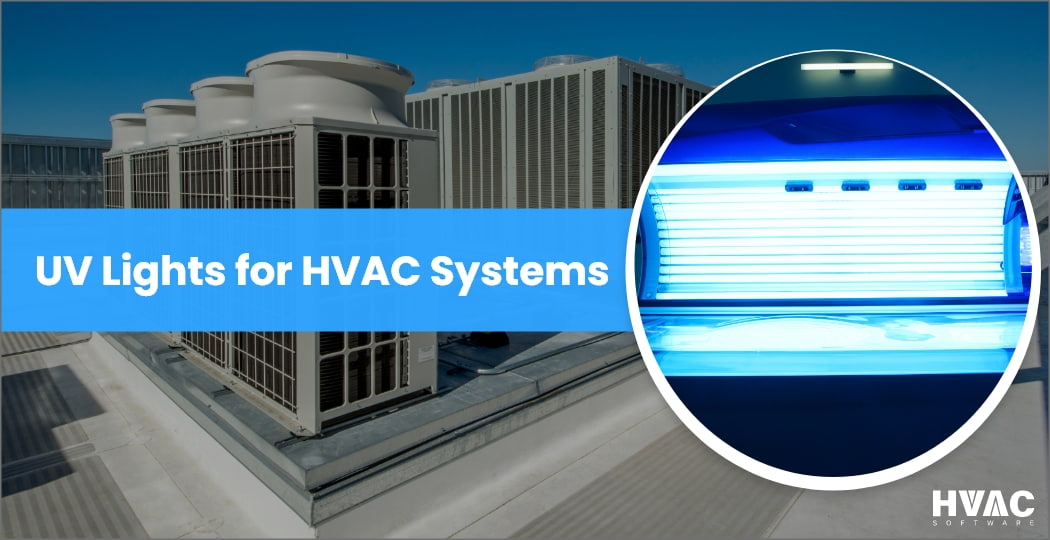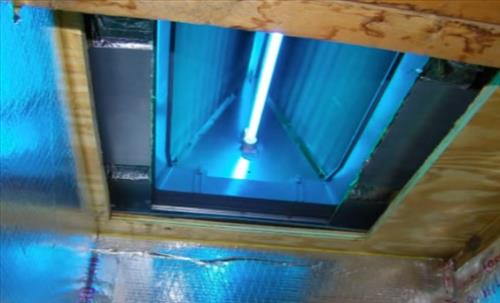Cost To Install Uv Light In Hvac

Many homeowners consider installing a UV light in their HVAC system to improve indoor air quality. These lights can help kill mold, bacteria, and viruses, leading to a healthier living environment. However, understanding the cost and potential problems associated with UV light installation is crucial. One common issue homeowners face is being surprised by the wide range of installation costs, and not knowing why those costs differ.
Understanding the Cost of UV Light Installation: A Troubleshooting Guide
The cost to install a UV light in your HVAC system can vary significantly based on several factors. Before you panic, let's break down the common problems and explore potential solutions.
Problem 1: Unexpectedly High Quotes
You've received a few quotes, and they're all much higher than you anticipated. This is a common concern, and several factors could be contributing to the increased price.
Diagnosis:- Type of UV Light: Different types of UV lights exist, each with varying costs. Common types are UV-C lights, which are most effective at killing microorganisms, and UV-A lights, which are less powerful and often used for air purification. UV-C lights typically cost more. Single bulb units are cheaper than dual bulb units.
- HVAC System Complexity: The accessibility and complexity of your HVAC system directly influence labor costs. A system that's difficult to reach or requires modifications for installation will increase the price.
- Installation Requirements: Some installations require additional components, such as electrical wiring or ductwork modifications. These additions will add to the overall cost.
- Contractor Overhead: Different contractors have different overhead costs, which are reflected in their pricing. Factors like insurance, licensing, and employee wages can affect the final quote.
- Geographic Location: The cost of living in your area influences labor rates and material prices. Expect higher prices in metropolitan areas.
- Research UV Light Types: Understand the different types of UV lights and their associated costs. Research online or consult with an HVAC professional to determine which type best suits your needs and budget.
- Assess HVAC System Accessibility: Take a close look at your HVAC system and assess how easily accessible it is. Can you easily access the ductwork where the UV light will be installed? Is there ample space to work? If it looks very tight or complicated, be prepared for higher labor costs.
- Check Existing Electrical Wiring: See if there's an existing electrical outlet near the installation point. If not, running new wiring will increase the cost. Some UV lights are low voltage and can be connected to existing HVAC control boards if they have the correct terminals.
- Gather Multiple Quotes: Obtain at least three quotes from different HVAC contractors. Compare the quotes carefully, paying attention to the details of what's included. Don't automatically choose the lowest quote; consider the contractor's reputation and experience.
- Ask for a Detailed Breakdown: Request a detailed breakdown of the quote, including the cost of the UV light, labor, and any additional materials or services. This will help you understand where the money is going and identify any potential areas for negotiation.
If you're uncomfortable working with electrical wiring, or if your HVAC system is complex and requires modifications, it's best to call a professional. Improper installation can damage your HVAC system or create a safety hazard. Also, if the installation requires modifying any warranty-protected components, you must use a qualified technician.
Problem 2: Hidden Costs and Unexpected Add-ons
The initial quote seemed reasonable, but now the contractor is adding on extra charges for things you weren't expecting.
Diagnosis:- Incomplete Initial Assessment: The contractor may not have thoroughly assessed your HVAC system before providing the initial quote. This can lead to unforeseen issues and additional costs.
- Code Requirements: Local building codes may require specific modifications or upgrades to your HVAC system to accommodate the UV light. These requirements can add to the overall cost.
- Unexpected Ductwork Issues: Upon closer inspection, the contractor may discover issues with your ductwork, such as leaks or damage, that need to be addressed before installing the UV light.
- Permitting Fees: Some municipalities require permits for HVAC modifications, which can add to the cost of the installation.
- Review the Initial Quote Carefully: Before the work begins, review the initial quote with the contractor to ensure it includes all necessary components and services. Ask questions about any unclear or vague items.
- Ask About Potential Hidden Costs: Specifically ask the contractor if there are any potential hidden costs or unexpected add-ons that you should be aware of. Get their assurance that they will inform you of any additional costs before proceeding with the work.
- Research Local Building Codes: Do some research on your local building codes to see if there are any specific requirements for UV light installation. This will help you anticipate any potential additional costs.
- Inspect Ductwork Yourself (Visually): Visually inspect your ductwork for any obvious signs of damage or leaks. While you may not be able to identify all potential issues, this can give you a general idea of the condition of your ductwork.
If you suspect the contractor is being dishonest or is adding on unnecessary charges, consult with another HVAC professional for a second opinion. Get a written quote from the second contractor, and compare it to the original quote. Document all communication with the original contractor in case you need to dispute the charges.
Problem 3: UV Light Not Working After Installation
The UV light has been installed, but it doesn't seem to be working. You're not sure if it's a faulty bulb or a more serious issue.
Diagnosis:- Faulty Bulb: The UV bulb may be defective or damaged during installation.
- Power Supply Issues: There may be a problem with the power supply to the UV light.
- Incorrect Wiring: The UV light may have been wired incorrectly during installation.
- Safety Switch Activation: Some UV light systems have a safety switch that prevents the light from turning on when the access panel is open.
- Ballast Failure: The ballast, which regulates the voltage to the UV bulb, may have failed.
- Check the Bulb: Visually inspect the UV bulb for any signs of damage, such as cracks or breaks. If the bulb is visibly damaged, it needs to be replaced.
- Verify Power Supply: Ensure that the UV light is receiving power. Check the circuit breaker or fuse that supplies power to the HVAC system. If the breaker is tripped or the fuse is blown, reset the breaker or replace the fuse.
- Check Wiring Connections: Carefully inspect the wiring connections to the UV light to ensure they are secure and properly connected. If you're not comfortable working with electrical wiring, skip this step and call a professional.
- Check Safety Switch: If your UV light system has a safety switch, ensure that the access panel is securely closed. The light should turn on automatically when the panel is closed.
- Reset the System: Some UV light systems have a reset button. Try pressing the reset button to see if it resolves the issue.
If you've checked the bulb, power supply, wiring connections, and safety switch, and the UV light still isn't working, it's time to call a professional. A professional can diagnose the problem and determine if the ballast needs to be replaced or if there's a more serious issue with the electrical system.
Problem 4: Concerns About UV Light Effectiveness
You've installed a UV light, but you're not sure if it's actually working effectively. You're concerned about air quality and want to ensure the UV light is doing its job.
Diagnosis:- Incorrect UV Light Type: You may have installed the wrong type of UV light for your needs. UV-A lights are less effective at killing microorganisms than UV-C lights.
- Insufficient UV Light Intensity: The UV light may not be powerful enough to effectively kill microorganisms.
- Improper Installation Location: The UV light may be installed in a location where it's not effectively irradiating the air stream.
- Airflow Issues: Airflow issues in your HVAC system may be preventing the UV light from effectively treating the air.
- Dirty UV Bulb: A dirty UV bulb will reduce its effectiveness.
- Verify UV Light Type: Confirm that you have the correct type of UV light for your needs (UV-C is generally recommended for killing microorganisms).
- Check UV Light Intensity: Check the specifications of your UV light to ensure it has sufficient intensity to kill microorganisms. A higher wattage bulb typically means greater intensity.
- Inspect Installation Location: Ensure that the UV light is installed in a location where it's effectively irradiating the air stream. It should be positioned to maximize exposure to the airflow. Ideally, it's located near the air handler coil to prevent mold growth.
- Clean the UV Bulb: Turn off the power to the HVAC system and carefully clean the UV bulb with a soft, dry cloth. Avoid touching the bulb with your bare hands. Fingerprints can reduce its effectiveness.
- Check Air Filter: A dirty air filter can restrict airflow and reduce the effectiveness of the UV light. Replace your air filter regularly.
If you're concerned about the effectiveness of your UV light, consult with an HVAC professional. They can assess your HVAC system, verify the installation location, and recommend any necessary adjustments or upgrades. An HVAC professional can also perform air quality testing to determine if the UV light is effectively improving your indoor air quality.
Conclusion
Installing a UV light in your HVAC system can be a great way to improve indoor air quality, but it's important to understand the potential costs and problems associated with the installation. By following these troubleshooting steps, you can identify and address many common issues yourself. Remember to prioritize safety and consult with a professional when necessary. With careful planning and proper installation, you can enjoy the benefits of cleaner, healthier air in your home.










